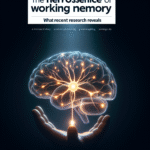
The Ultimate Guide to Inclusive Learning: Adapting Homework for Students with Learning Disabilities
Introduction
In today’s diverse classrooms, educators face the increasing challenge of meeting the varied needs of all students. Inclusive learning—particularly when adapting homework for students with learning disabilities—is essential for fostering an equitable educational environment. It’s not just about compliance with educational standards; it’s about recognizing every student’s potential to thrive. This article dives deep into inclusive learning: adapting homework for students with learning disabilities, revealing strategies, insights, and real-world applications to empower educators and enhance student success.
The Importance of Inclusive Learning
Understanding the significance of inclusive learning is the first step in adapting homework effectively. Students with learning disabilities often face obstacles that can hinder their academic progress. According to the National Center for Learning Disabilities, approximately 1 in 5 students has a learning disability. These students can struggle with reading, writing, math, or executive functioning. Adapting homework can make education accessible, ensuring that all students can engage with the curriculum meaningfully.
Understanding Learning Disabilities
What Are Learning Disabilities?
Learning disabilities (LD) refer to a range of disorders that affect the brain’s ability to receive, process, or respond to information. The National Joint Committee on Learning Disabilities describes several common types of LD, including:
- Dyslexia: Difficulty with reading, spelling, and decoding written text.
- Dysgraphia: Challenges with writing, including difficulties with handwriting, spelling, and organizing thoughts.
- Dyscalculia: Struggles with math, including difficulties with number recognition, calculations, and problem-solving.
- Executive Functioning Issues: Difficulty in organizing, prioritizing, and executing tasks.
Adapting homework assignments is crucial for ensuring students with learning disabilities can demonstrate their understanding without being hindered by their challenges.
Strategies for Adapting Homework
To effectively adapt homework for students with learning disabilities, educators can incorporate various strategies. Here are some proven approaches:
1. Differentiate Assignments
When implementing inclusive learning: adapting homework for students with learning disabilities, it’s vital to differentiate assignments based on students’ individual needs. Differentiating can involve modifying the content, process, or products of assignments. For instance:
- Content: Provide audio versions of text for students with dyslexia.
- Process: Allow students to work collaboratively in pairs or groups.
- Product: Allow students to present their work in various formats, such as a video or a poster instead of a traditional report.
2. Use Technology
Leveraging technology can greatly enhance homework adaptations. Tools like text-to-speech software, organizational apps, and interactive learning platforms can provide students with the necessary support to complete assignments independently.
Case Study: Implementation of Assistive Technology
At Lincoln High School, teachers integrated a range of assistive technologies for students with learning disabilities. Students used apps like Grammarly for writing and Khan Academy for math support. Over a semester, the school observed a 30% improvement in homework completion rates among students with learning disabilities. This case illustrates the effectiveness of technology in inclusive learning: adapting homework for students with learning disabilities.
3. Simplify Instructions
Clear and concise instructions are pivotal. Use simple language and provide step-by-step guides to help students understand what is expected. Visual supports like charts or graphics can also enhance understanding.
Table: A Comparison of Complex vs. Simplified Instructions
| Complex Instructions | Simplified Instructions |
|---|---|
| "Please solve the problems on page 25 and complete the questions at the end." | "Complete problems 1 to 5 on page 25. Then answer questions 1 and 2 at the end." |
| "Write an essay that discusses the themes of the novel." | "Write 5 sentences about the main theme of the book." |
4. Provide Flexible Deadlines
Recognizing that students with learning disabilities may require additional time to complete assignments is vital in inclusive learning: adapting homework for students with learning disabilities. Flexible deadlines not only reduce stress but also allow students to manage their time effectively.
5. Offer Varied Assessment Methods
Instead of traditional tests, consider varied assessment methods. Projects, presentations, and portfolios can provide a more holistic view of a student’s understanding. For instance, a student with dysgraphia may excel in verbal presentations instead of written tests.
Case Study: Portfolio Assessment
At Greenview Middle School, educators switched to a portfolio assessment method for students with learning disabilities. This approach allowed students to showcase their best work across subjects. Feedback indicated that students felt more confident and engaged in their learning, highlighting a positive outcome connected to inclusive learning: adapting homework for students with learning disabilities.
Building a Supportive Environment
To facilitate inclusive learning: adapting homework for students with learning disabilities, creating a supportive classroom environment is essential. Here are several ways to foster support:
Foster Open Communication
Encourage students to express their needs and challenges. A culture of openness can promote self-advocacy and lead to more effective homework adaptations.
Involve Parents and Guardians
Engaging families in the adaptation process helps create consistency between home and school. Parents can provide insights regarding their child’s strengths and weaknesses, guiding teachers in creating appropriate assignments.
Provide Training for Educators
Regular professional development focused on inclusive practices ensures that all teachers have the tools and knowledge needed to adapt homework effectively. Workshops can include topics on identifying learning disabilities, using assistive technologies, and implementing differentiation strategies.
The Role of Peer Support
Encouraging peer collaboration can significantly enhance the learning experience for students with learning disabilities. Using buddy systems can provide students with the support they need to successfully complete homework assignments.
Research Finding
A study by the Collaborative for Academic, Social, and Emotional Learning found that peer mentoring can improve academic performance by up to 25% among students with learning disabilities. This highlights the value of social support in inclusive learning: adapting homework for students with learning disabilities.
Conclusion
The journey towards inclusive learning is both challenging and rewarding. By adapting homework for students with learning disabilities through differentiated assignments, technology integration, clear instructions, flexible deadlines, and varied assessments, we can create a more equitable educational environment. Ultimately, fostering a supportive classroom, engaging parents, and nurturing peer relationships will empower all students to succeed.
Call to Action
As educators, it’s our duty to embrace inclusive learning by adapting homework for students with learning disabilities. Let’s commit to recognizing the unique challenges our students face while equipping them with the tools they need to flourish academically and personally.
FAQs
1. What should educators keep in mind when adapting homework for students with learning disabilities?
Educators should focus on individual needs, provide clear instructions, and embrace flexible deadlines. Involving parents and using technology can also be beneficial.
2. How can technology assist students with learning disabilities in completing homework?
Technology can offer tools like text-to-speech software, organizational apps, and learning management systems that provide interactive experiences tailored to students’ needs.
3. What are some effective strategies for creating differentiated assignments?
Educators can modify assignments by altering content, process, or product expectations based on each student’s strengths and weaknesses.
4. Why is it important to involve parents in the homework adaptation process?
Parents provide valuable insights into their child’s learning style and challenges. Involving them can create a consistent support system between home and school.
5. How can peer support enhance the learning experience for students with learning disabilities?
Peer support fosters collaboration and understanding. Students can learn from each other, and having a buddy can make completing homework less intimidating.
By embracing the principles of inclusive learning—specifically the art of adapting homework for students with learning disabilities—we can create a thriving educational landscape that truly accommodates and champions diversity. Together, we can ensure every student has the resources and support needed to succeed.
















